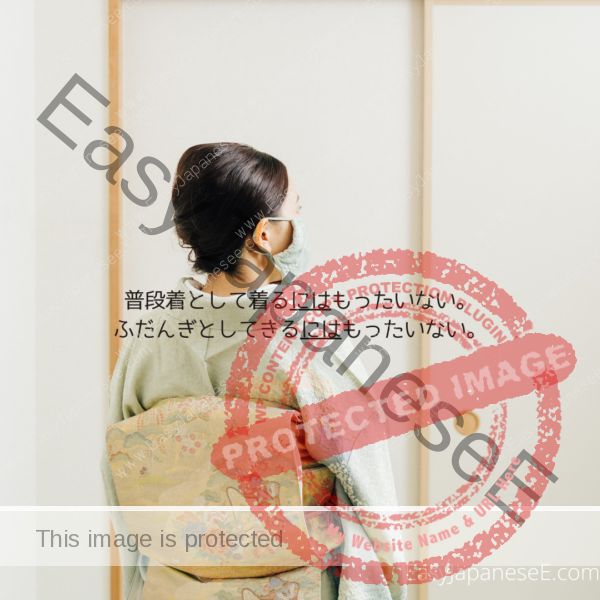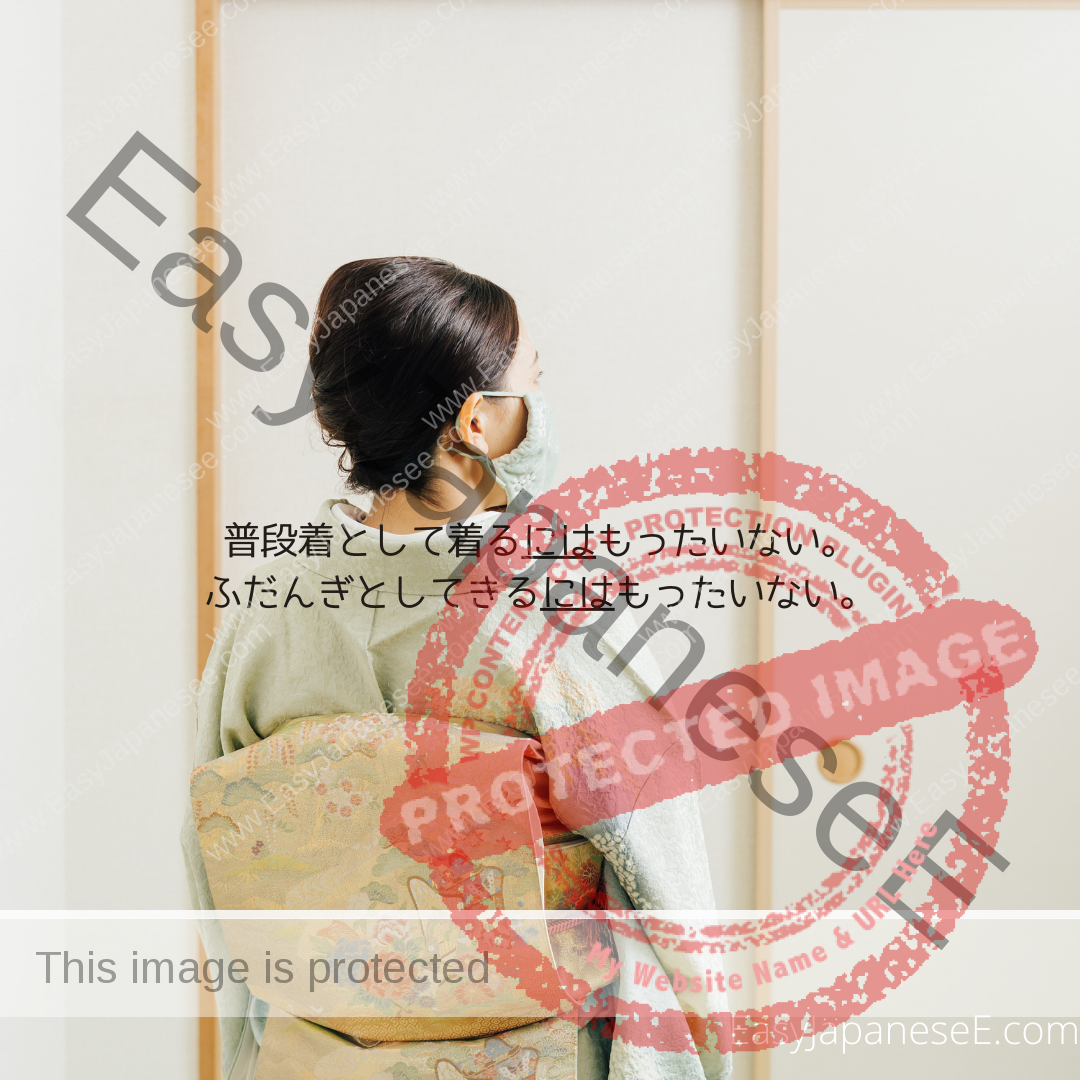
Today’s Grammar Point: ~には
~には has several meanings but today I’m going to talk about には that follows a dictionary form verb. [dictionary form verb] + には means “(in order) to ~” but rather than stating the purpose of the action, it sets the condition or limit. So ~には is often used in the translation of an English sentence with “too … to ~” or in a sentence that states a requirement for an action. See the examples below.
Connection
- [dictionary form verb] には
Examples of setting the condition
まだ寝るには早い。
It’s too early to go to bed.普段着として着るにはもったいない。(Today’s caption)
It’s a waste to wear it as everyday wear.結婚するには若すぎる。
Too young to get married.このケーキは食べちゃうにはかわいすぎる。
This cake is too cute to eat.この荷物は日本に送るには重すぎる。
This package is too heavy to send to Japan.
Examples of stating the requirement(s)
大学に行くには、入学試験に合格しなければならない。
To go to university, you must pass the entrance exam.アイスクリームを食べるには、スプーンが必要だ。
You need a spoon to eat ice cream.この文章を読むには、三時間かかる。
It takes three hours to read this passage.このケーキを作るには、クリームチーズが要るよ。
You need cream cheese to make this cake.今日本に帰るには、一人当たり最低4000ドルかかる。
It costs at least $ 4,000 per person to return to Japan now.
When には follows a noun for a person/people
If ~には follows a person, this には can often replace ~にとっては, which is explained in this post.
夫は私にはかけがえのない人です。
My husband is an irreplaceable person for me.80点は私には良い点数ですが、兄には悪い点数らしいです。
80 points is a good score for me, but it seems to be a bad score for my brother.大人には小さなことでも、子どもには一大事だ。
Even small things for adults are important for children.
If you liked this article, please share it with your friends using the social media buttons below. Also, your clicks on ads on this page help covering the cost of running this website. Your support will be much appreciated.

